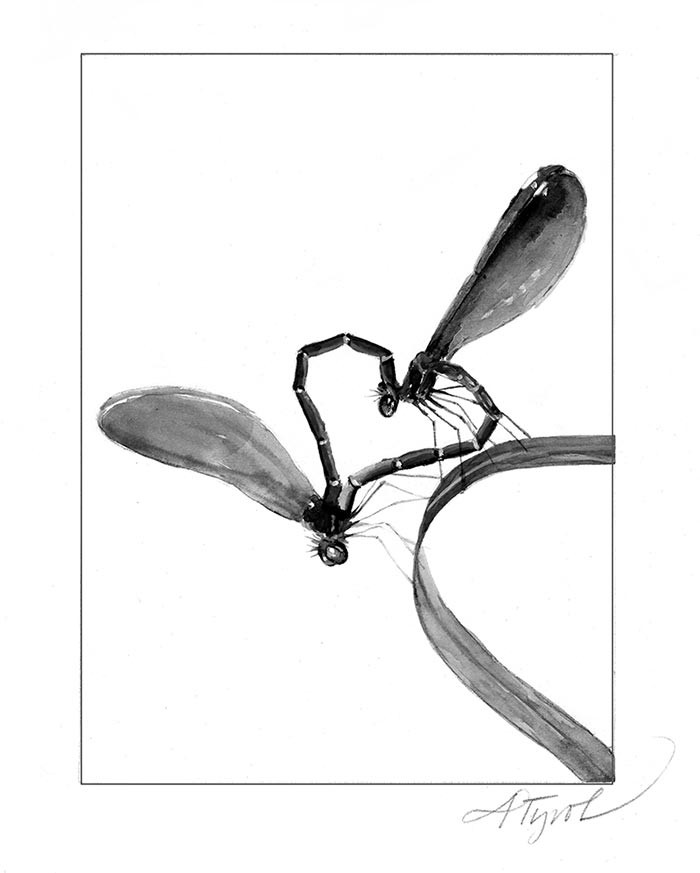
The fluttering flash of black and iridescent green was startling, and it took me a moment to figure out what I was seeing. In the blink of an eye, the movement stopped and the insect seemed to disappear. But by then I had it figured out. It was a damselfly with black wings that caught my attention, a male ebony jewelwing.
Damselflies are close relatives of the more familiar dragonflies – they share the order Odonata – but damselflies appear to be more delicate, with a thinner abdomen and weak flight skills. Damsels are most easily identified by the way they hold their wings at rest – folded together in line with their abdomen, rather than open and perpendicular as dragonflies do. On closer inspection, damselflies also differ from dragonflies in having eyes that protrude from their heads, thoraxes nearly as narrow as their abdomens, and front wings about the same size and shape as their hind wings.
But the two groups are very similar as well. Both lay their eggs in ponds, streams and other water bodies where their larvae live for a year or more before emerging into their adult form. Both are also voracious predators, consuming all sorts of soft-bodied insects that they catch on the wing, from flies and mosquitoes to other dragonflies and damselflies. And both fall prey to a wide variety of larger predators, including birds and bats. As larvae they are fed upon by frogs, turtles, fish, and insects.
Jewelwings are unusual among the damselflies for having mostly black wings. Males have wings that are entirely inky black and bodies colored metallic green or bluish, while females have a white spot at the tip of each smoky black wing, and their bodies are dark gray.
Found throughout much of the eastern United States and Canada, they grow to be about two inches long and are common in June and July in New England. Look for them on low shrubs in sunny openings in the forest canopy, close to rivers and streams. They’re hard to see, though, because the contrasting sun and shade of their preferred habitat keeps them well hidden. You’re more likely to notice them in flight, fluttering like butterflies, as if disturbed by your arrival. They only fly short distances, and they’re easy to track, so if you follow them slowly without making sudden movements, you should be able to approach quite close. Be ready for them to take flight again soon, though, as they seldom perch for long.
Their mating behavior, like that of most dragonflies and damselflies, is acrobatic. The males attract a mate with what biologists call a cross display – he faces the female with his hind wings pointed downward at right angles to his body, his forewings and abdomen raised to reveal a pale area on the underside of his abdomen. He then uses the uniquely designed clasper extending from the end of his abdomen to grasp the female just behind the head, and together the couple flies around conjoined. The female stores the male’s sperm in her body, and eggs are fertilized as they are laid.
Occasionally a bird will attempt to capture a mating pair of jewelwings and only grab part of one individual, leaving the female with the male’s headless body attached to her neck, or a male dragging along a female’s head and thorax. Love in the air can be gruesome.
This month, consider going on a jewelwing hunting expedition. Unlike butterflies, dragonflies and damselflies have sturdy bodies and wings, so they can be safely captured in an insect net, held gently in the hand, and released unharmed. Doing so will allow you to admire the details of these creatures, a close examination impossible through binoculars. In the case of ebony jewelwings, I’m most impressed with how their metallic coloration appears to shift from green to blue to purple at different angles, and how their long legs firmly grasp my finger. It’s an opportunity to connect with wildlife that few other species afford.


Discussion *